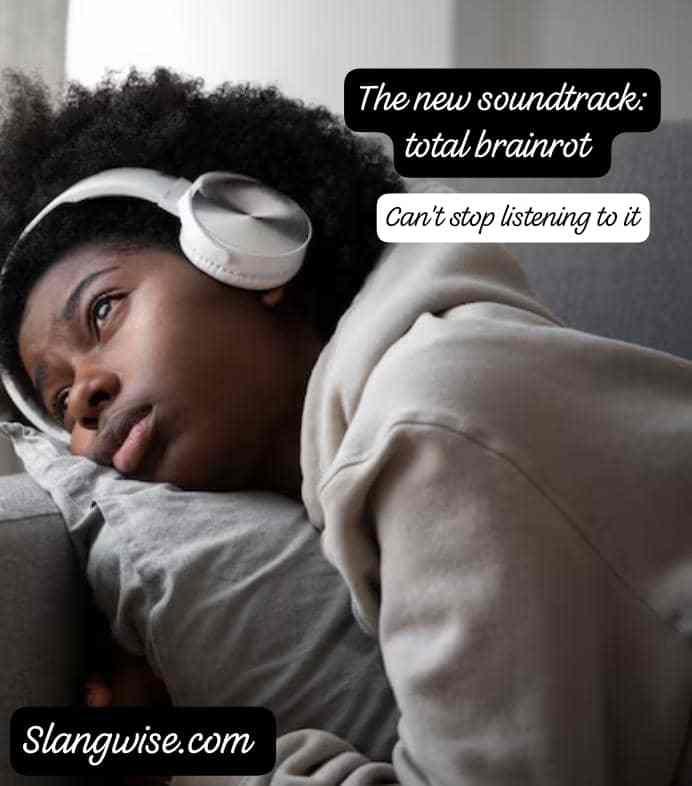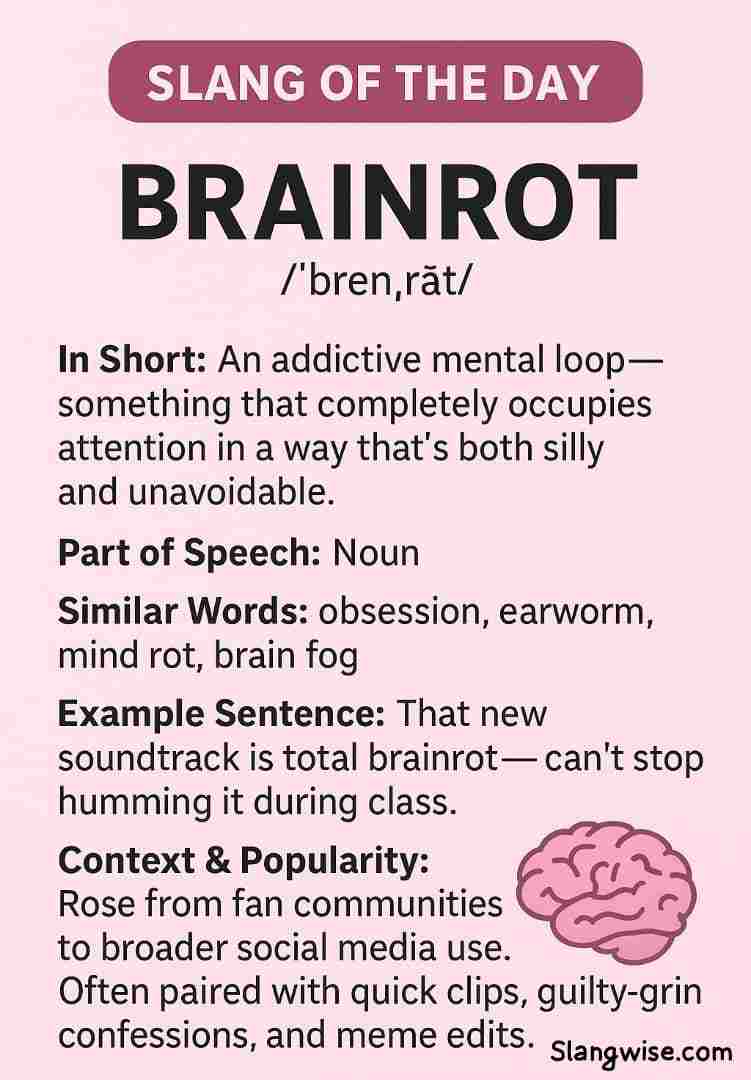What Does Brainrot Mean In Slang?
Brainrot (/ˈbreɪnˌrɒt/)
Brainrot is the perfect word for those tiny, unstoppable obsessions that take over the mind. It started in online fandoms and social feeds to describe a kind of obsessive, often silly fixation; when a song, character, meme, or trend gets stuck in the head and refuses to leave.
At first, it was a self-aware joke among fans, but it soon spread among Gen Zs and Gen Alphas across TikTok, Twitter, and Discord, becoming a shorthand for the kind of harmless mental takeover that feels equal parts delightful and embarrassing.
In Short: Brainrot in slang is an addictive mental loop, something that completely occupies attention in a way that’s both silly and unavoidable.
Part of Speech: Noun (often used informally as a mass noun)
Similar Words: obsession, earworm, mind rot, brain fog (informal)
Example Sentence: 
“That new soundtrack is total brainrot, can’t stop humming it during class.”
The word works because it captures a familiar feeling. Everyone gets a tune or an idea stuck in their head sometimes, but brainrot adds a playful tone to the experience. It’s not clinical; it’s not serious.
Instead, it’s a lighthearted confession: this thing has wormed into thought patterns and will probably be the subject of late-night scrolling, meme edits, and overeager fan posts.
Context & Popularity:
Brainrot rose from fan communities, think TV shows, K-pop stans, indie game lovers, and migrated into broader social media use.
On TikTok, users pair the term with quick clips showing over-the-top obsession: endless replay buttons, frantic edits, or guilty-grin confessions.
Fans admit to “having brainrot” about a character’s outfit, a catchy chorus, or a single line of dialogue. The term also fits well with “brain rot culture,” where people celebrate low-effort, high-pleasure content that’s weirdly satisfying and mentally sticky.
Because it’s flexible, brainrot can be playful or self-mocking. Someone might tag a friend in a post and write, “You gave me brainrot,” turning the phrase into a mini-complaint and a compliment at once.
It frequently appears in comments, captions, and meme threads where quick emotional shorthand rules the day.
Where it’s used: TikTok, Twitter/X, fandom Discords, Instagram captions, meme edits, and casual chat among friends.
Caution/Tip: Use brainrot in casual settings. Dropping it into formal or professional conversations can seem odd or unprofessional. It’s best for playful moments and shared online jokes.
Cringe Score: 3/10 – mostly harmless, a touch embarrassing in public.
Emoji: 🧠
In essence: Brainrot is the friendly name for those tiny mental hijackings the internet specializes in, equal parts charm and stubborn repeat-play.

